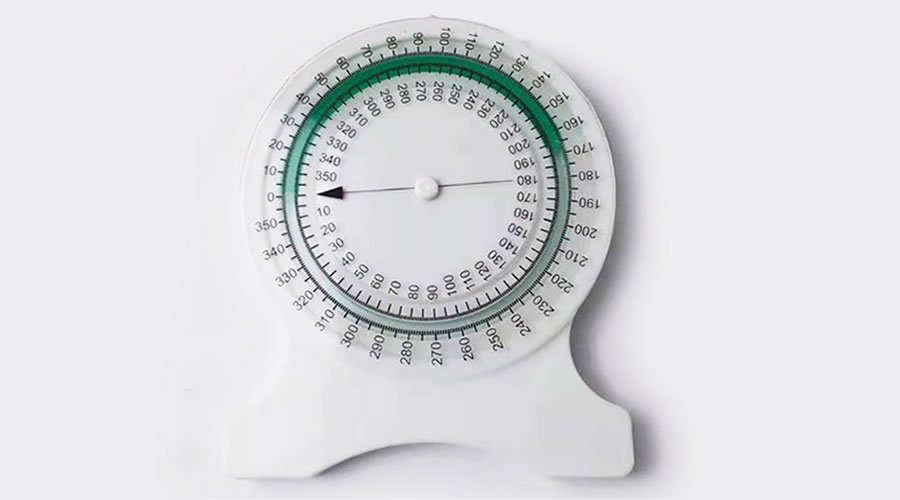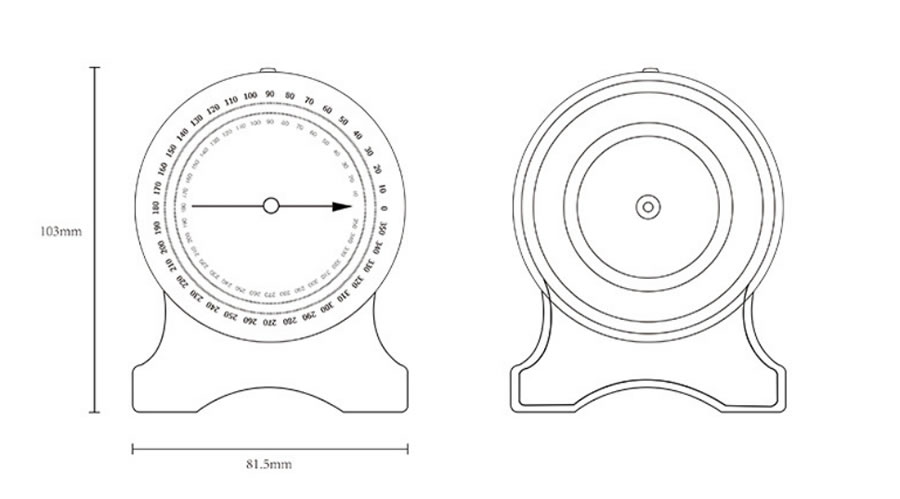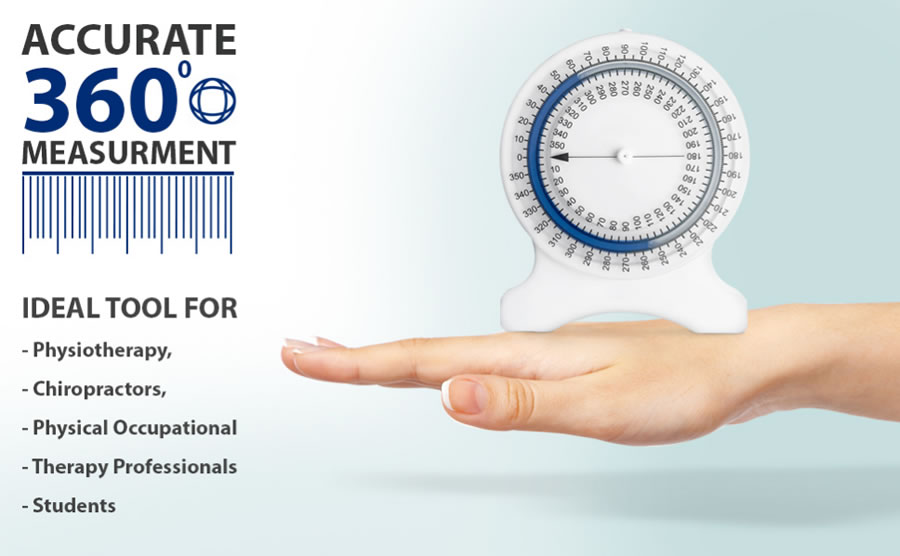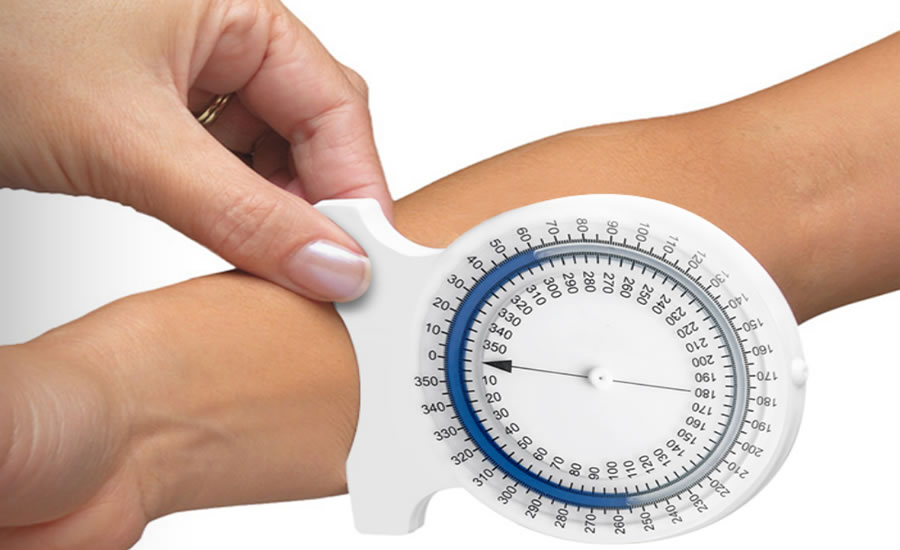A Bubble Inclinometer is a tool used to measure the range of motion in joints. It’s particularly useful in medical, physical therapy, and rehabilitation contexts.
The Bubble Inclinometer accurately measures the range-of-motion for various joints, including the neck, hips, spine, and more. To use, position it near the joint and read the movement in degrees directly from the dial.
Chosen by medical professionals, therapists, and clinics for years, our inclinometer plots spinal curvature and measures movements like flexion, extension, and abduction. It comes with a protective case for transport and storage, along with a comprehensive instruction manual. It meets standards outlined in the AMA Guide to the Evaluation of Permanent Impairment, third edition.

How it works:
The device has a dial with an internal bubble (similar to the bubble in a level tool).
When placed on a joint or body part, the bubble moves as the joint or body part is moved.
The position of the bubble indicates the angle of inclination, which is read off the dial in degrees.

Features:
Precise: Offers accurate measurements of angles.
Portable: Typically small and easy to carry, making it ideal for clinical settings.
Non-invasive: Measures angles without any discomfort to the patient.
Measures from 0 to 360 degrees.
Covered by a 1-year warranty.
Dial can be reset to zero at any position.
Compact design for easy portability.
Hypoallergenic with latex-free construction.
Dimensions: 4″ x 0.2″ x 4″.
Weight: 0.3 lbs.
UPC: 714905014962.

Use:
Medical: Used by doctors to diagnose or monitor conditions affecting the joints.
Physical Therapy: Physical therapists use it to track progress in patients recovering from injuries.
Rehabilitation: Useful in rehab clinics to measure and monitor a patient’s progress over time.

Position on the desired area to measure its range of motion.To use a bubble inclinometer, you typically place it on or near the joint to be measured. As the joint moves, the bubble within the device shifts, and the degree of the angle can be read directly off the dial. This allows medical professionals to accurately measure and track the range of motion of a joint.
The Bubble Inclinometer, like many medical devices, is typically made from a combination of materials that are durable, easy to clean, and safe for use on patients.
Casing/Body:
- Plastic: High-impact resistant plastic is often used because it’s durable and lightweight. It can also be easily cleaned and sterilized.
- Metal: In some models, parts of the casing might be made of metal, especially if additional durability or weight is desired.
Dial:
- Plastic or Glass: The clear front of the dial, through which the readings are taken, is typically made of transparent plastic or sometimes glass for clarity and durability.
Internal Liquid:
- A viscous liquid, often similar to mineral oil, fills the bubble chamber. This liquid allows the bubble to move smoothly, making it easier to take accurate readings.
Bubble:
- The bubble itself is a pocket of air or gas within the liquid-filled chamber.
Scale/Markings:
- Ink or Paint: The degree markings on the dial are often printed with a durable ink or paint that can resist fading or wear over time.
- Magnets or Rubber: If the inclinometer has a magnetic or non-slip base, it might contain small magnets or rubberized materials to help it adhere to surfaces or stay in place during measurements.
Protective Carry Case:
- Often made of molded plastic, fabric, or sometimes a hard-shell case material for added protection.


